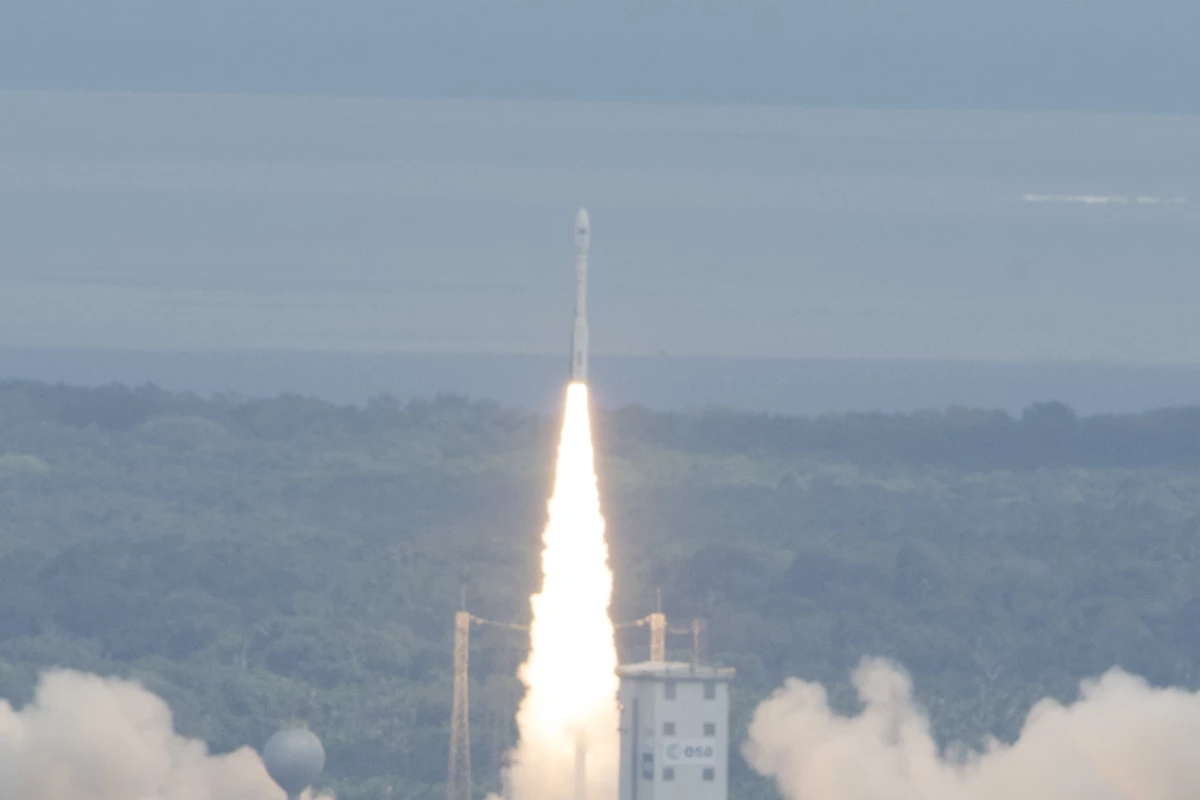ESA's IXV experimental spaceplane has successfully carried out its 100-minute mission to test technology re-entry and navigation technology for the next generation of European spacecraft. Whilst often described as a spaceplane, the IXV is in reality an atmospheric re-entry testing package wrapped in what appears to be a basic space shuttle fuselage. The resulting data accrued from the launch will inform a wide range of endeavors, spanning from re-supply trips to the ISS, to manned return missions to Mars.
Weighing in at two tons (1.8 tonnes) and costing an impressive €150 million (US$170 million), the IXV represents a significant stepping stone in ESA's mission to develop reusable spacecraft and launch stages with independent, advanced and reliable automated re-entry capability. In pursuit of this goal, the experimental vehicle was fitted with over 300 sensors designed to track a wide range of atmospheric phenomenon including pressure and temperature.
The launch itself did not go without incident. A 40-minute hold was implemented only 4 minutes and 35 seconds prior to launch, as an issue was detected in the telemetry link between the spacecraft and the receiving ground station. However, the team was able to remedy the error, and with the weather and spacecraft status still green across the board, the count for IXV's launch resumed.

The Vega rocket launched from, Kourou, French Guiana, at 14:40 CET, carrying with it the unmanned experimental vehicle. Whilst the launch was executed by personnel at the launch site, over the course of the mission it would be tracked by a global team effort situated in Italy, Africa and even the recovery ship the Nos Aries , located near the splashdown site in the Pacific Ocean.
The Vega launch vehicle's trajectory took the IXV spacecraft east across the globe, pushing the spacecraft to a height of 450 km (280 miles) above the Earth, before plunging through the atmosphere at a speed of 27,000 km/h (16,777 mph). IXV was protected by a mixture of ceramic plating similar to that which protected the US Space Shuttle Program, and an ablative material akin to that used for atmospheric re-entry for the Apollo missions.
The IXV survived the re-entry process, its heat shield holding up to temperatures exceeding 1,700 ºC (3,029 ºF). Safely through the Earth's atmosphere, the spacecraft then deployed three consecutive parachutes that slowed it down from atmospheric re-entry speeds, splashing down gently in the Pacific ocean. Small fast boats then hunted down the spacecraft, deploying divers to attach additional buoyancy devices and check for toxic spills emanating from the spacecraft. The Nos Aries then closed on the IXV, retrieving the experimental vehicle with its on-board crane.
Source: ESA





